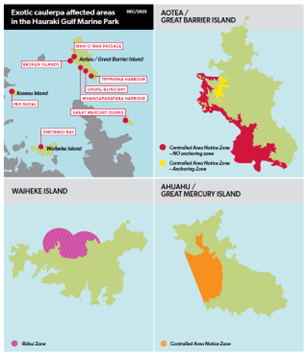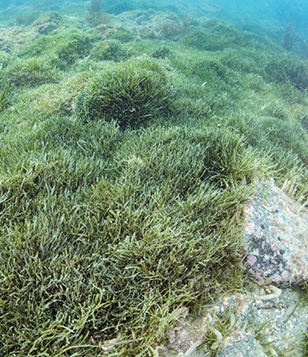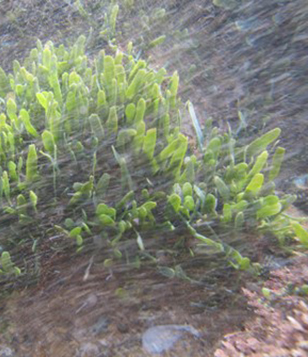Two species of exotic caulerpa seaweed (Caulerpa brachypus and Caulerpa parvifolia) have been found in waters surrounding Waiheke Island, Great Barrier Island (Aotea), Great Mercury Island (Ahuahu), Kawau Island, and in Te Rāwhiti Inlet in the Bay of Islands. These non-native seaweeds pose a significant threat to our coastal ecosystems, presenting a risk to recreational, cultural, and commercial marine activities.
Legal controls restricting activities that risk spreading caulerpa, known as Controlled Area Notices (CANs), as well as the application of rāhui, have been implemented at three locations – Aotea Great Barrier Island, Ahuahu Great Mercury Island, and Te Rāwhiti Inlet (please see the maps below). The restrictions on anchoring, vessel movement and fishing are generally consistent across these areas, with some location-specific conditions. While Waiheke Island and Kawau Island do not currently have CANs in place, boaties and fishers are strongly advised to avoid the areas around Thompson’s Point and Onetangi Bay at Waiheke Island and Iris Shoal at Kawau Island. Ngāti Paoa has imposed a rāhui prohibiting disturbance of the seabed or anchoring within one nautical mile (1.8 kilometres) of Thompson's Point and Onetangi Bay.
You can help by adhering to anchoring and fishing restrictions in affected areas. Please report any suspected sightings of non-native caulerpa seaweed at other locations to the Ministry for Primary Industries via phone (0800 80 99 66) or their online form (linked here). Boaters are reminded to inspect their anchors and gear for any presence of seaweed while on the water. If seaweed is detected, it should be promptly removed, securely bagged or contained to prevent re-entry into the water, and disposed of in a rubbish bin upon reaching shore.
Stay informed by checking regularly for updates and learn more about measures to prevent the further spread of exotic caulerpa species here.



